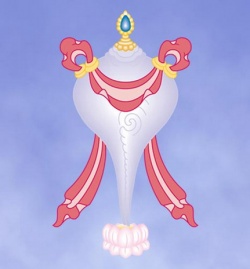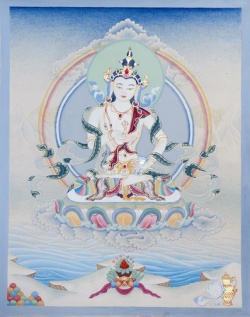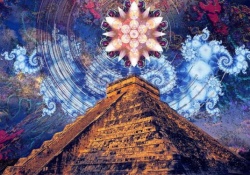Who Owns a Monastery in the Mulasarvastivada Vinaya?
Schopen’s discussion on ownership in the Mulasarvastivada Vinaya is much more detailed, and I cannot hope to do it justice here. Here is Schopen’s own summary of his findings. As he emphasizes, it is difficult to draw definite conclusions without much more study, yet the findings in this summary are all securely attested in the Mulasarvastivada Vinaya passages that he quotes.
The Mulasarvastivada Vinaya typically represents a segment of northern Indian Buddhism, from say 200CE-500CE. It is today the canonical Vinaya in central Asian Buddhism, including Tibet, and Schopen relies on the Tibetan and Sanskrit sources.
Our texts fairly consistently use forms of the verb dadati, ‘to give’, or niryatayati, ‘to present’, to describe what laymen do with property in regard to monastic communities.
But these same texts just as consistently continue to refer to the property that was ‘given’ to the monastic community as still belonging to the ‘donor': it is ‘his’ or ‘mine’, depending on whether the donor is speaking or being spoken about.
That this is not simply a necessary linguistic or narrative convention seems fairly certain from the kinds of obligations, interests,, and control that the donor continues to have in regard to the property even after it has been given.
A donor, for example, not only provides ‘his’ vihara with its initial requisites or benefits, but he – or even his relatives in his absence – continues to do so.
He also continues to be concerned about its physical maintenance: he personally rewards a monk who keeps it up, or he provides endowments for that purpose. Moreover, the monastic seal of the vihara bears his name, and its movable property is to be labeled as belonging to ‘his’ vihara.
More specifically still, building sites on property donated by him cannot be sold, except for the specific purpose of benefiting the Community as a whole, without his permission; nor can a vihara or any moveable property donated by him be abandoned or disposed of at will by the monks.
Even after being absent for more than ten years, he may claim as his own even property that has been removed from his vihara and stored in another.
In light of all this, it is hard to know what to call that which the donor did with his property: if he gave it, that act of giving did not annul or even necessarily diminish the donor’s obligations, interests, or rights in regard to the property given.
Many of the passages Schopen cites concern the question of ensuring that the lay donors acquire merit. (A concern also found in the Thai Sangha Act, which stipulates as one of the duties of the abbot that he must make provision for lay people to make merit.)
This merit is felt to continue and accrue, even after the death of the donor, but only, it seems, if the thing offered is actually used. (This was a point of contention among the schools; the Theravada position, at least in theory, opposes this idea.)
So when lay people offered plates to the monastery, the monks accepted them. When the donors next visited the monastery, they noticed the monks were not using the plates. They asked the monks, who said, ‘We have our bowls’.
The lay people complained, and the Buddha instructed that the monks must use the plates.
In another example, if there are monasteries offered that remain vacant, the Buddha instructed that they be used every day, even if this means that the monk must stay in one in the morning, take his meal in a second, go to a third for the afternoon, another for the evening, and sleep in still another.
In each place, he has to make sure the place is swept and cleaned. Schopen comments:
Monasteries … are presented here primarily not as residences for monks to live but rather as potential and permanent sources of merit for their donors.
Monks are] under heavy obligations, and those obligations are not determined by the religious life or needs of the monks, but by the spiritual needs of donors.
The overall effect of the evidence Schopen presents is to make the notion of ownership much less absolute than we normally think.
It is not a clear-cut legal right, such that a property of values departs, at one defined moment, from the hands of one party into the hands of another.
It seems that ‘giving’ involved entering into a long-term relationship. The gratitude for the gift and the spiritual needs of both parties are a part of that relationship.
Some of the requirements found in the Mulasarvastivada Vinaya sound extreme, and, as always with the Vinaya, it is unsure to what extent these rules where actually practiced, and to what extent they represent the views of the Vinaya redactors about what ‘should’ happen.
Obviously we are witnessing a developed form of monasticism that has moved on considerably from the ideal found in the early texts.
Nevertheless, the central notion is quite in accordance with the early texts, and indeed with Buddhist culture today, where the intentions of the donor are always considered in how the donation is used.
In modern charity law, similarly, funds or property that are donated must only be used as per the intentions of the original donor.


